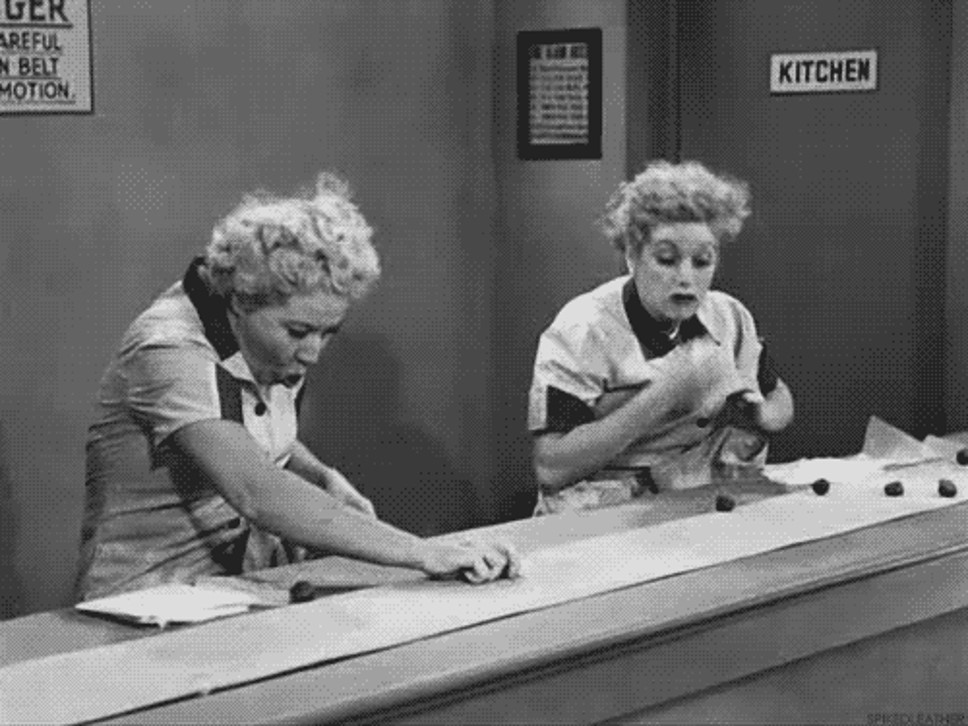When I was a kid, I loved watching the TV sitcom, I Love Lucy. Lucille Ball was one in a million. There was a famous episode during which Lucy and her friend Ethel work at an assembly line, where they were assigned to wrap pieces of chocolate as they came down the conveyor belt. At first, the job was easy. The chocolate pieces were coming down the belt at a slow enough speed that Lucy and Ethel could easily grab each piece of chocolate and wrap it.
Then the speed of the conveyor belt quickened, and Lucy and Ethel had their hands full. Literally. They couldn’t wrap each piece of chocolate in time before the next piece was already passing them, so they grabbed handfuls of chocolate and shoved them in their pockets and in their mouths. It was hilarious, and that episode became a famous part of TV history.
Clearly, increasing the speed of the conveyor belt didn’t work. Lucy and Ethel weren’t able to keep up with the pace of the belt. If the company that Lucy and Ethel were working for wanted to produce more wrapped chocolates in less time, they should have had more factories with more assembly lines and more workers like Lucy and Ethel wrapping chocolates coming down the multiple conveyor belts.
Deep inside your muscle fibers, those factories are the mitochondria, and those workers—the Lucys and Ethels—are the enzymes that catalyze the chemical reactions involved in aerobic metabolism. The more mitochondria your muscles have, the greater your muscles’ capacity to use oxygen and the faster pace you will be able to sustain. The most efficient way to make more mitochondria—more factories, more assembly lines, and more workers—is to run more. And to run more, you have to slow down your runs, because there is an inverse relationship between training intensity and duration: The faster you run, the lower the total amount you can run.
The number and size of mitochondria in your muscle fibers is sensitive to the volume of work performed. When the factories are stressed because of greater demand, more and larger factories will be built to increase their supply to match the demand. If those pieces of chocolate kept coming down the conveyor belt long after the 30-minute I Love Lucy episode was over, more conveyor belts, and more and larger factories to hold those conveyor belts, would have been built to keep up with the demand for chocolate.
One of the biggest mistakes runners make is thinking that to run faster in races, they need to run faster in workouts. So they run their workouts faster than their current fitness level dictates. I once coached a college runner who ran 19 minutes for 5K and she told me she wanted to be trained like a 17:30 5K runner. So I told her to run a 17:30 5K and then I’ll train her like a 17:30 5K runner. Races, which tell you your current level of fitness, dictate the training speeds, not the other way around. As a distance runner, don’t run to practice running faster; run to improve the physiological characteristics—to make more assembly lines—that will enable you to run faster in the future. Even if it’s not as funny as the I Love Lucy chocolate episode.

My question is how can I develop fast twitching muscles for me to be able to lower my time in the 5 km and 10 km distances? Can you give me a sample 1 week program for a 5 km & 10 km that can make me achieve 5 km in 16 minutes and 10 km in 35 minutes times?
To improve 5K & 10K, you first have to maximize your aerobic development. You can also train fast-twitch muscle fibers by running very long, so that they get recruited after the slow-twitch fibers fatigue. After you have maximized your aerobic development, then you can do specific interval training to address the anaerobic components of the 5K & 10K.
Jason. It’s funny that you wrote this article and Lucy’s Famous chocolate scene. Because I always compared my body running too fast every day to Lucy’s Chocolate scene. There comes a point in time when she couldn’t keep up and neither can your body. Great to see you used it in this article. Great example and analogy.
Awesome, Kamran! Great minds think alike!
amazing article-you are always on point, and the fact you are a runner makes it even better 🙂
Thanks, Andrea!
And here I was hoping that eating more chocolate was going to be the secret key to developing more mitochondria. Once again reality takes over and there are no shortcuts!